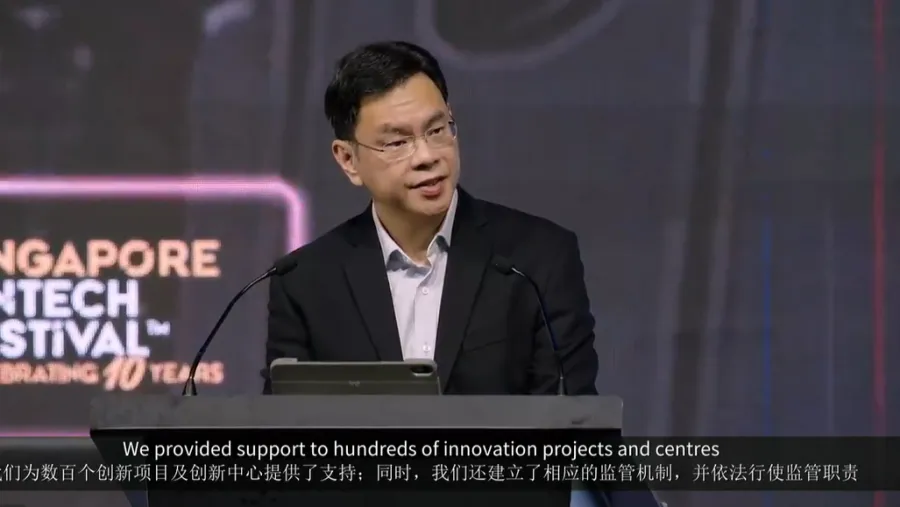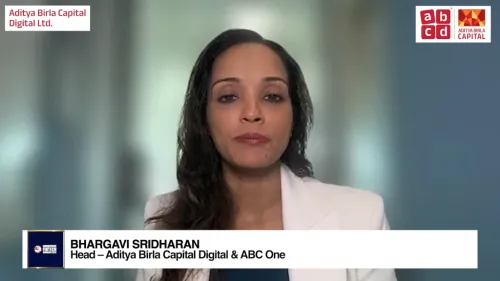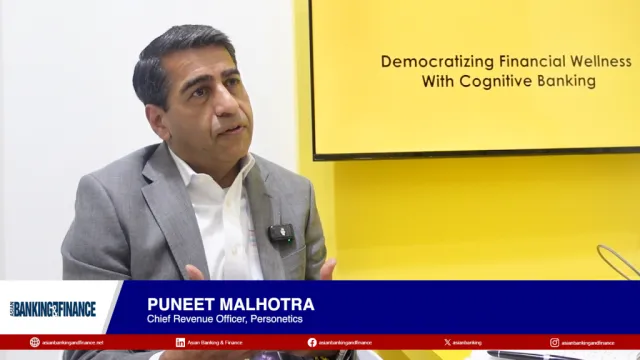
Singapore to trial tokenised MAS Bills using central bank digital currency
The move follows the first live interbank settlement using wholesale digital currency.
The Monetary Authority of Singapore (MAS) will begin trialling the issuance of tokenised MAS Bills to primary dealers, with the transactions to be settled using a wholesale central bank digital currency (CBDC).
Further details on the trial will be released next year, following the completion of the first live interbank settlements using wholesale CBDC by DBS, OCBC and UOB, Chia Der Jiun, Managing Director of the Monetary Authority of Singapore (MAS), said during his keynote speech at the Singapore FinTech Festival 2025, held on the Festival Stage on 13 November.
Chia said these developments mark the next phase of the city-state’s tokenisation efforts, noting that financial institutions have already issued bonds “natively and settled on the chain”. However, he cautioned that adoption remains uneven.
“Money market funds have been tokenised, and major banks have offered tokenised cash management services to corporate treasuries,” he said. “Have asset-backed tokens achieved escape velocity? Not yet.”
The industry risks creating isolated systems if institutions continue developing their own closed networks due to different specifications. Chia warned that this could lead to a fragmented landscape or a small number of monopolies posing concentration risk.
“The industry needs to develop and adopt a model where they cooperate to build a marketplace for asset-backed tokens whilst competing to bring products, clients, and liquidity to the market,” he added.
To address this, the MAS has been working with global policymakers and industry players under ‘Project Guardian’ to establish common standards for tokenised funds, bonds and foreign exchange transactions. “We are also collaborating to promote network interoperability.”
Chia also pointed to the launch of the Global Layer One toolkit, a set of 108 controls that network operators can use to assess whether their blockchain infrastructure meets regulatory and market expectations.
In line with this, MAS will publish a guide detailing the regulatory treatment of tokenised capital markets products, including issues such as investor rights, smart contract governance and settlement finality.
In a tokenised environment, the concept of money is still at an early stage, Chia noted, with only a few options currently qualifying as safe and reliable settlement assets. These include CBDCs, tokenised bank liabilities, and regulated stablecoins.
“At the current stage, market participants are experimenting with different settlement assets for different use cases, and each must demonstrate value through utility and safety,” he added.
Institutional-grade blockchain networks were another key focus. Wholesale tokenised transactions require clear governance, secure and reliable performance, predictable fees, privacy, optionality, settlement finality, and regulatory compliance—features not always found in public, permissionless networks.
Moreover, Chia outlined how artificial intelligence (AI) is spreading through financial operations, from information retrieval and multilingual customer service to software development, market analysis, underwriting, and fraud detection.
“An emerging area of application is the use of autonomous agents in more complex processes,” Chia said. “There are also projects to develop consumer agents that collect information and execute transactions, but agentic autonomy must come with sufficient guardrails.”
To support safe adoption, the authority will publish a new set of principles-based supervisory guidelines for consultation, covering governance and controls across the AI lifecycle. “In parallel, ‘Project MindForge will also be publishing today an AI risk management executive handbook.”
“This executive handbook sets out the key components of good AI risk management,” he added.
Chia also announced BuildFin, a new initiative to solve shared AI challenges.
Its first project is a financial-sector voice-to-text model capable of transcribing Standard Singapore English, or Singlish, and mixed-language conversations, which existing large language models are “not fully ready to take on”, he said.

















 Advertise
Advertise










